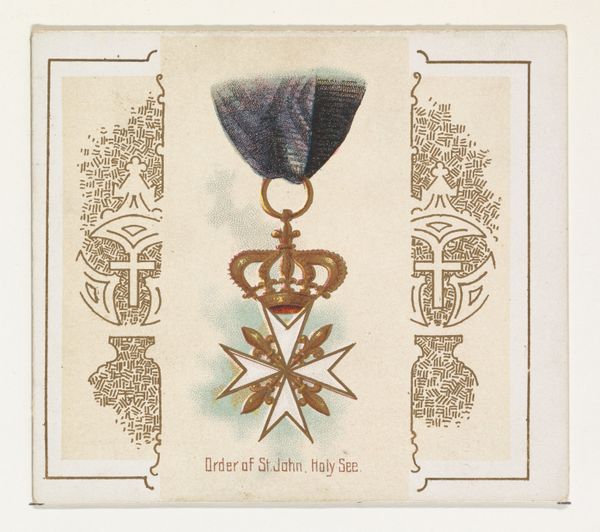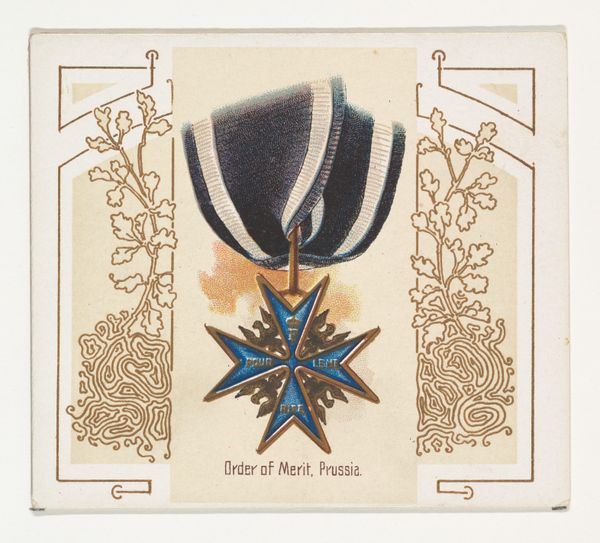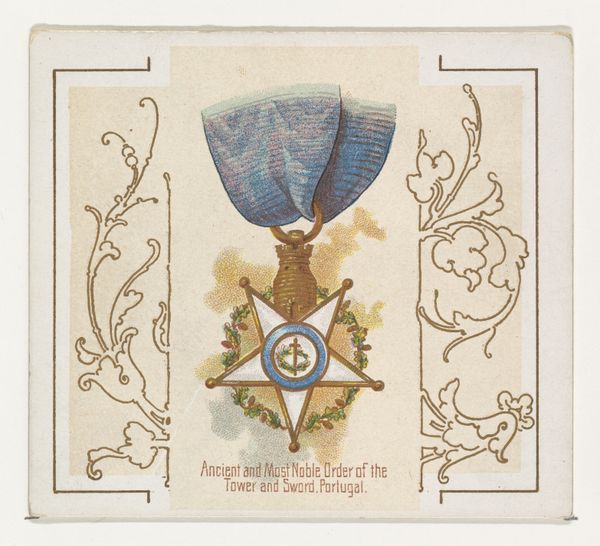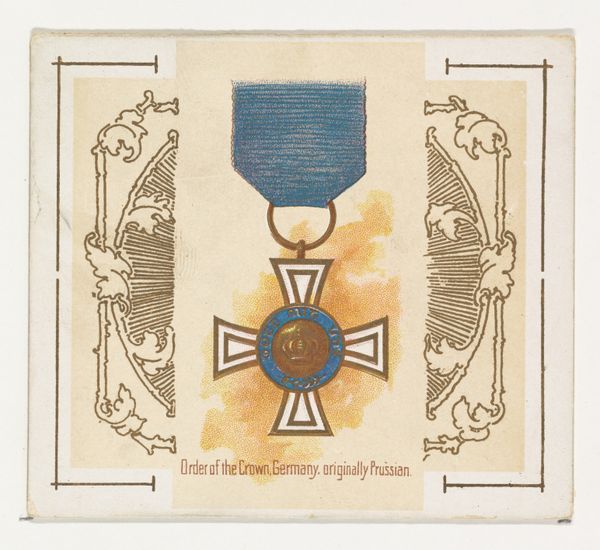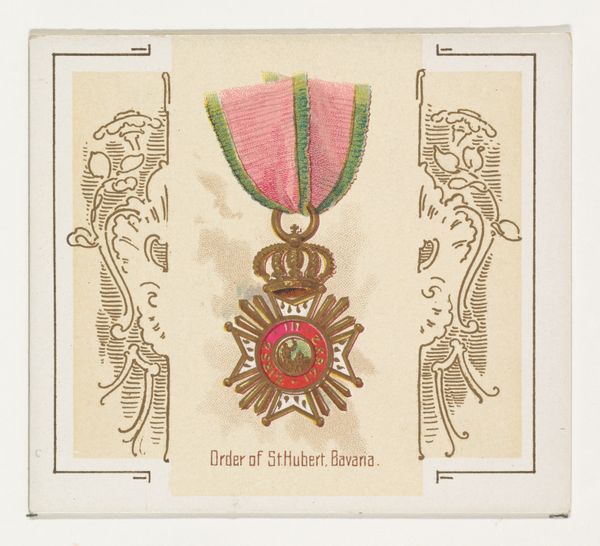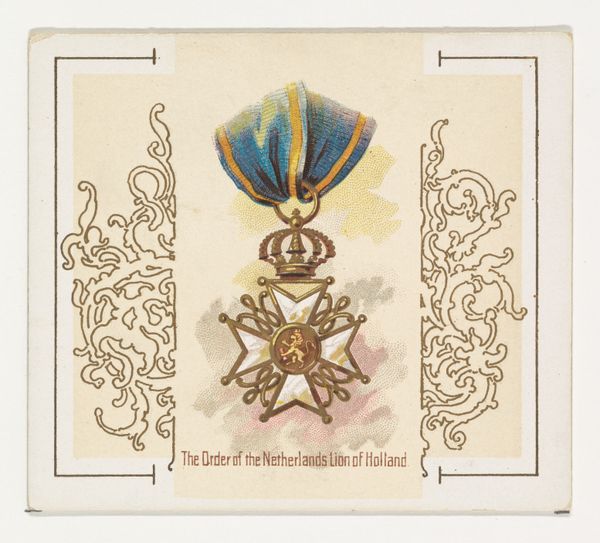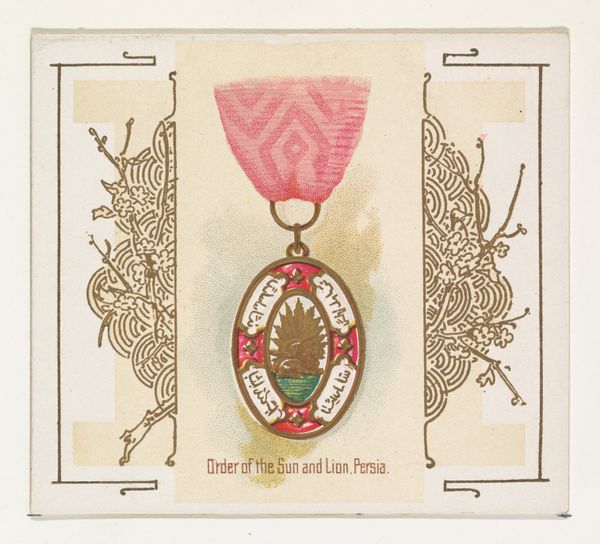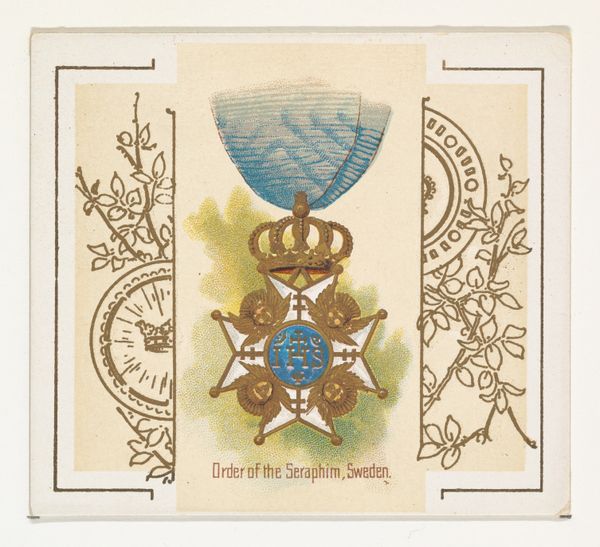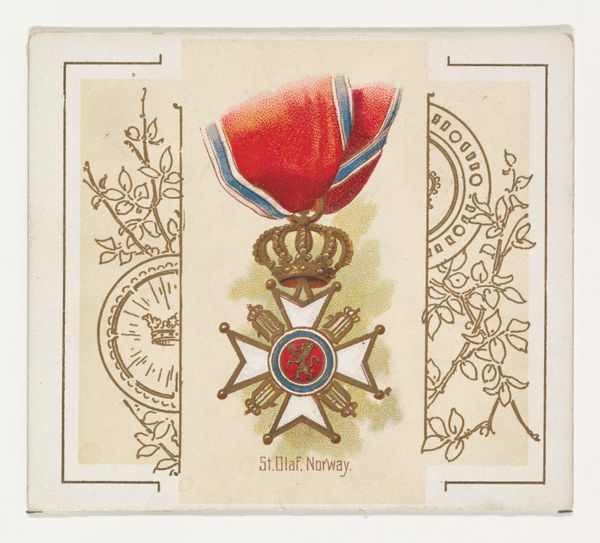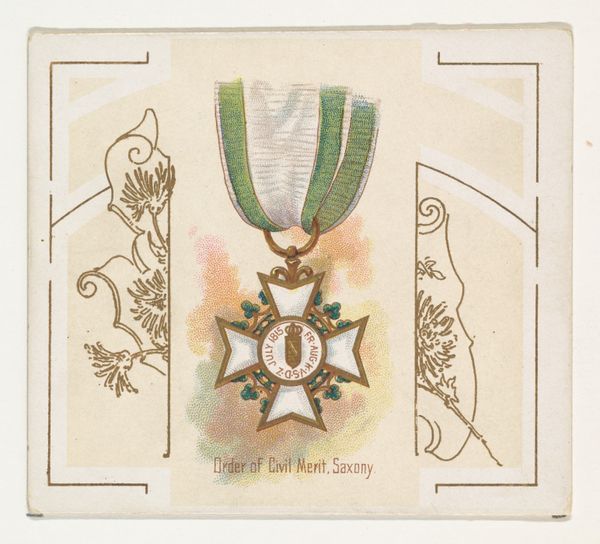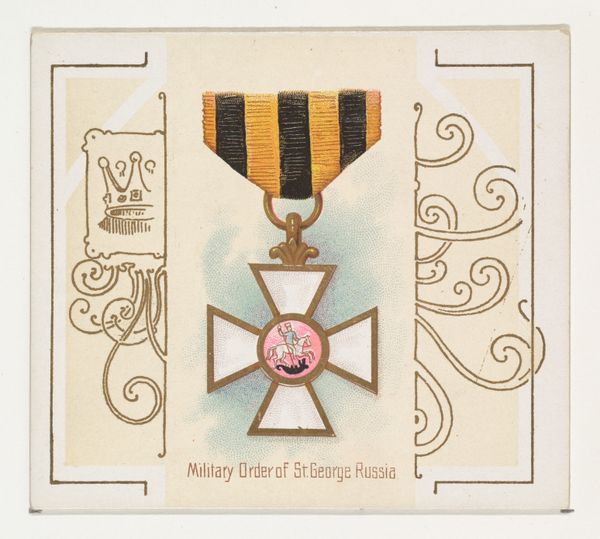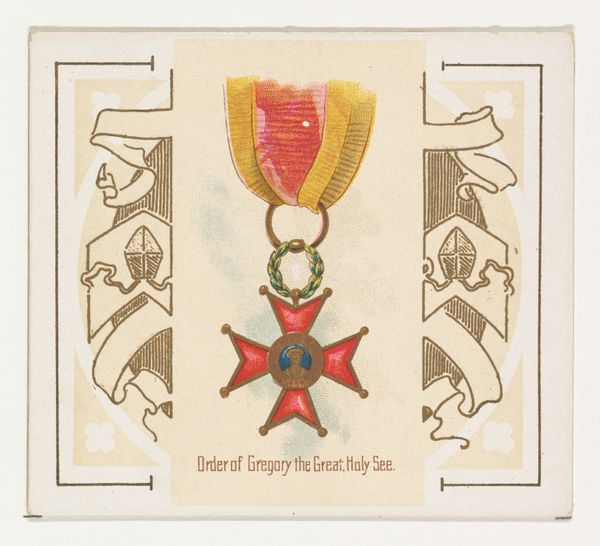
Order of Saint Andrew, Russia, from the World's Decorations series (N44) for Allen & Ginter Cigarettes 1890
0:00
0:00
drawing, graphic-art, mixed-media, print, watercolor
#
drawing
#
graphic-art
#
mixed-media
#
art-nouveau
#
water colours
# print
#
watercolor
#
orientalism
#
symbolism
Dimensions: Sheet: 2 7/8 x 3 1/4 in. (7.3 x 8.3 cm)
Copyright: Public Domain
Editor: This is "Order of Saint Andrew, Russia" made around 1890 by Allen & Ginter as part of their World Decorations series, utilizing mixed media. It feels like an illustration from a storybook with a touch of Art Nouveau. What stands out to you in terms of its symbolism? Curator: The Order of Saint Andrew itself is a fascinating artifact, imbued with centuries of cultural memory. Notice the double-headed eagle—a recurring motif in Byzantine and Russian heraldry. It signifies the empire's ambition, looking both East and West. And what about the color choices, like that striking red in the crown? What emotions does that evoke for you? Editor: The red definitely makes me think of royalty and power. It's interesting that even in this small format, the colors still pack a punch. Curator: Precisely. Colors aren't just decorative; they're encoded with meaning. Red, in many cultures, symbolizes strength, passion, and even sacrifice. Then consider the placement of peacock feathers along the side: Their association with immortality and incorruptibility serves as a poignant reminder. This is a carefully constructed tapestry of symbols meant to convey status and virtue. Editor: So, it’s like every element has a story to tell. It really goes beyond just a pretty picture! Curator: Indeed. These symbols act as a kind of visual shorthand, triggering associations and reinforcing the values of the elite class at the time. Editor: Thinking about these symbolic components has given me a new way of approaching art. I'm starting to think more like a detective of cultural history. Curator: And that's precisely what makes studying art so enriching – it invites us to unravel the layers of meaning that shape our world.
Comments
No comments
Be the first to comment and join the conversation on the ultimate creative platform.
